The following is a small "dictionary" of Franconian wine that will help both connoisseurs and wine novices to find their way around.
Everything important about Franconian wine - short and compact!
The following is a small "dictionary" of Franconian wine that will help both connoisseurs and wine novices to find their way around.
Barrique
The French word „Barrique“ actually means quite simply „barrel“. However in wine making terminology it has a much more important meaning. The barrel in question is an oak one in which certain wines (and also beers) are fermented or matured. Wine that ages in a Barrique barrel acquires a special taste. Its aromas and tannins are rounded off by components in the wood of the oak tree such as notes of vanilla. As there is less exchange of air in this barrel than in a stainless steel tank, the wines undergo a different type of oxidation, which allows their flavours to become concentrated, particularly in red wine. However, now Franconian winemakers are successfully experimenting with maturing white wine from their best sites in these barrels, a procedure which requires expertise and subtlety. The quality of a Barrique wine depends on the quality of the wine itself ,the oak wood of the cask and the so-called toasting (lightly charring the empty barrel over a fire).Many of the trees used to make the Barrique casks originate in France, but the oaks from the Franconian Spessart forests are eminently suitable, too.
Bocksbeutel
The Bocksbeutel bottle is almost synonymous with quality wines and wines with special attributes from Franconia. Since 1989 only these wines (and those from a few much smaller wine regions) may be bottled in the unmistakably shaped Bocksbeutel. Bocksbeutels and quality have been closely linked for a long time. Back in 1728 the city council of Würzburg decided that the best wines from the vineyard site “Am Stein” should be filled in Bocksbeutels. The history of the noteworthy bottle with its flat, elliptical form is of course much older. A Celtic earthenware “pre-Bocksbeutel” dating back to 1400 B.C. was found near Aschaffenburg. Some people claim that a ram (Bock) and his scrotum (Beutel) gave the bottle its curious name, but this is maybe only idle conjecture. More likely is the historical connection with military or pilgrimage containers for water made of glass, wood, pewter, copper or leather. These flat, rounded bottles were attached to the traveller’s belt and had a similar-sounding name, “Bugsbeutel”.
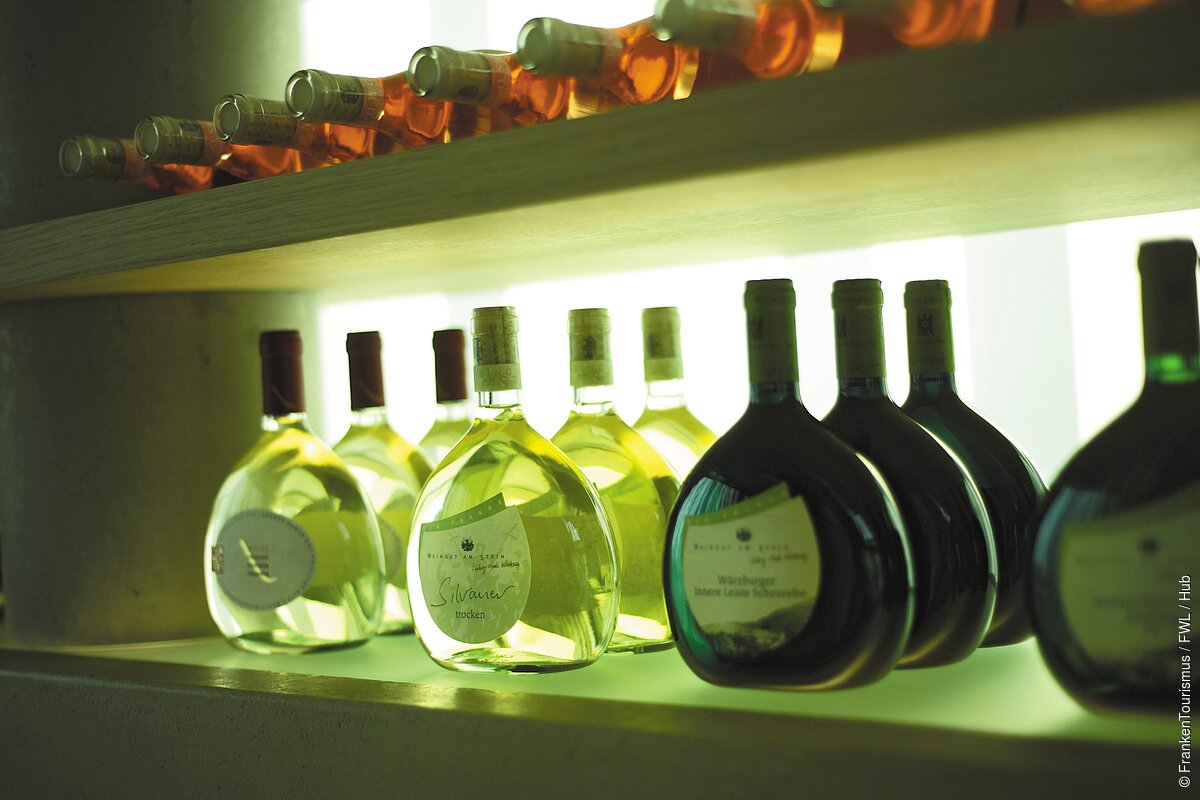
Fermentation
Without fermentation, grape juice would never become wine, as it is responsible for its alcohol content. Alcoholic fermentation is a process controlled by enzymes in which organic compounds are broken down without oxygen. The necessary enzymes come from yeasts: to put it simply, they convert sugar into alcohol. In fact, this degradation consists of at least twelve individual chemical processes. However, fermentation produces not only alcohol but also carbon dioxide, which is dangerous to humans. Today, the gas is discharged in a controlled manner, but in the past, this also caused deaths in the wine cellar.
"Heckenwirtschaft"
The "Heckenwirtschaft" (hedge economy) goes back to privilege granted upon the winegrowers during the time of Emperor Charlemagne. The winegrowers were allowed to serve their own wines "behind the hedge". To indicate the serving, the so-called "Buschen" (shrubs), "Strauß" (bouquet), or "Besen" (broom), made from parts of the "hedge", was hung on the house.
Today there is a clear distinction between a "Heckenwirtschaft" and a "Häckerwirtschaft". The term "Häckerwirtschaft" can be used by any wine tavern. A "Heckenwirtschaft" may only be open for a total of four months a year and must be registered with the relevant municipality. The number of seats in a "Heckenwirtschaft" is limited to 40. The wines on tap must be homegrown. Only cold or hot food which is simply prepared may be offered.
the "Heckenwirtschaften" in Franconia
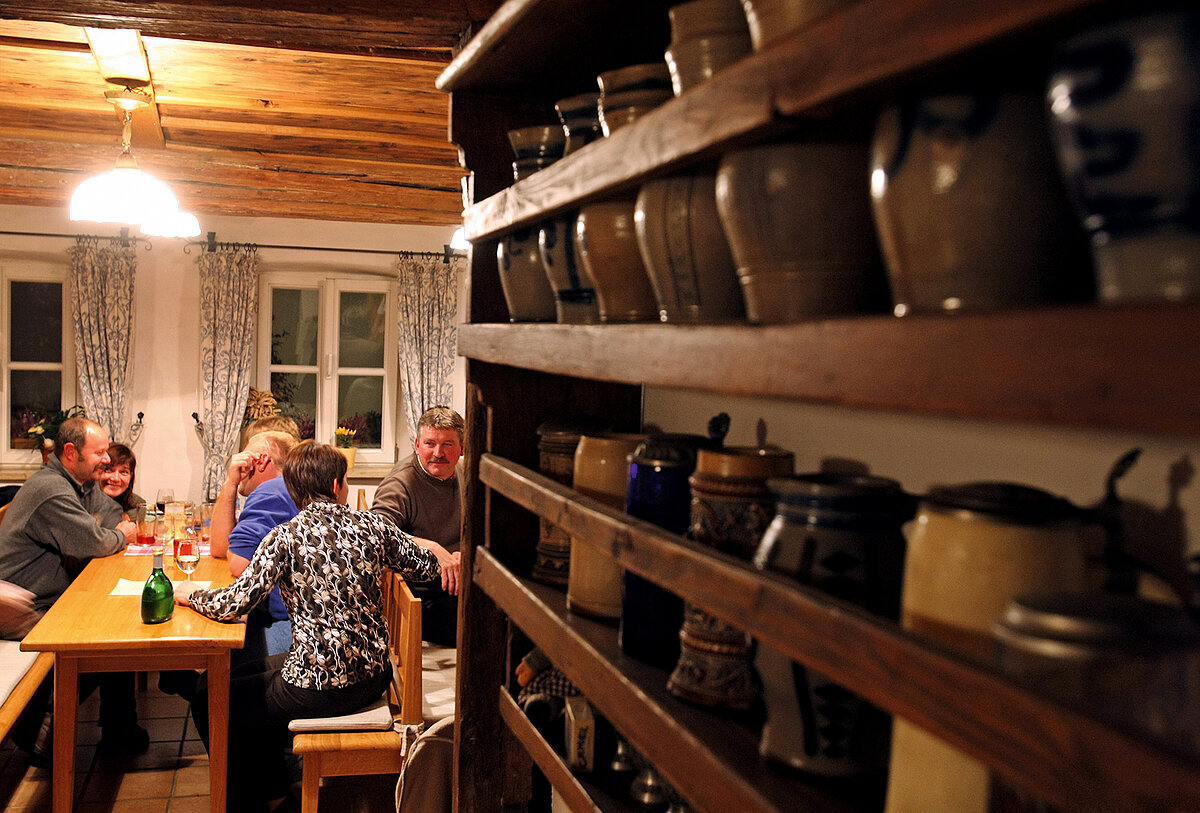
Vineyard site
„Würzburger Stein“, „Escherndorfer Lump“, „Volkacher Ratsherr“, or „Iphöfer Julius-Echter-Berg“:These names of well-known Franconian wine-growing sites are synonymous for the highest-quality wines which grow there. However generally speaking, the name of an individual site is no more than a geographical designation. The word “Einzellage” refers to a specified individual vineyard area, a “Großlage” is a combination of several such adjacent areas into a larger unit producing wines of similar quality and character.
to the winegrowing area of Franconia
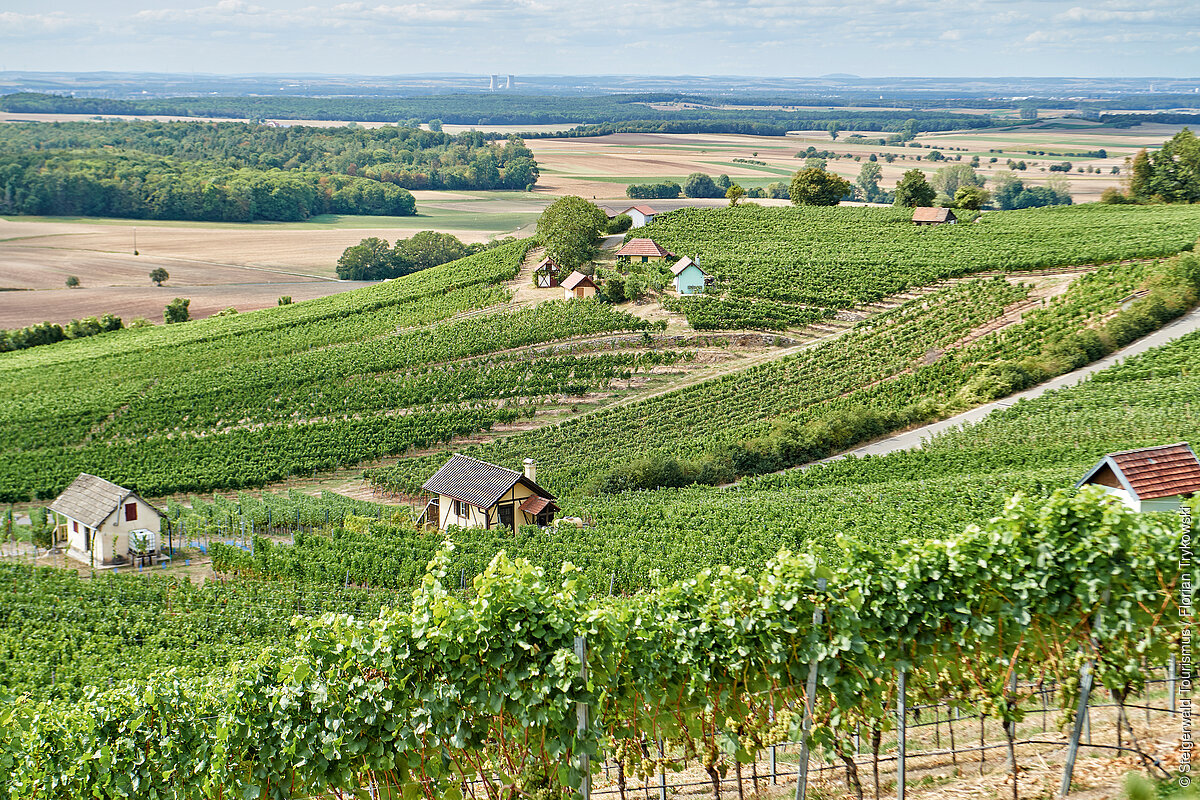
Oechsle
The "Grad Oechsle" (abbreviated to ° Oechsle or ° Oe) is named after its inventor, Ferdinand Oechsle. This unit of measurement can be used to indicate how many grams more a liter of must weighs than a liter of water. Above all, this provides information about how much sugar is contained in the grape must. This must weight is an important quality criterion for wine and helps to determine the possible alcohol content of a wine.
Vine varieties
White with delicious splashes of red - That’s what the world of Franconian wine varieties looks like. Originally Silvaner (Sylvaner) was the most important variety in Franconia. A Cistercian Abbot had the first of these vines planted back in 1659 and Silvaner is still the most typical Franconian variety, although Müller Thurgau (Rivaner) also has an important part to play. Other grape varieties are Weißburgunder (Pinot Blanc) Grauburgunder (Pinot Gris) Riesling, Kerner, Bacchus, Scheurebe and Traminer. About 19 per cent of Franconian vineyards are planted with red wines such as Portugieser, Schwarzriesling, Spätburgunder, Domina, Dornfelder, Acolon and Regent. In Franconia a wine called “Rotling” is very popular. It is not a wine variety, however, but a blend of white and red grapes which are combined before pressing.
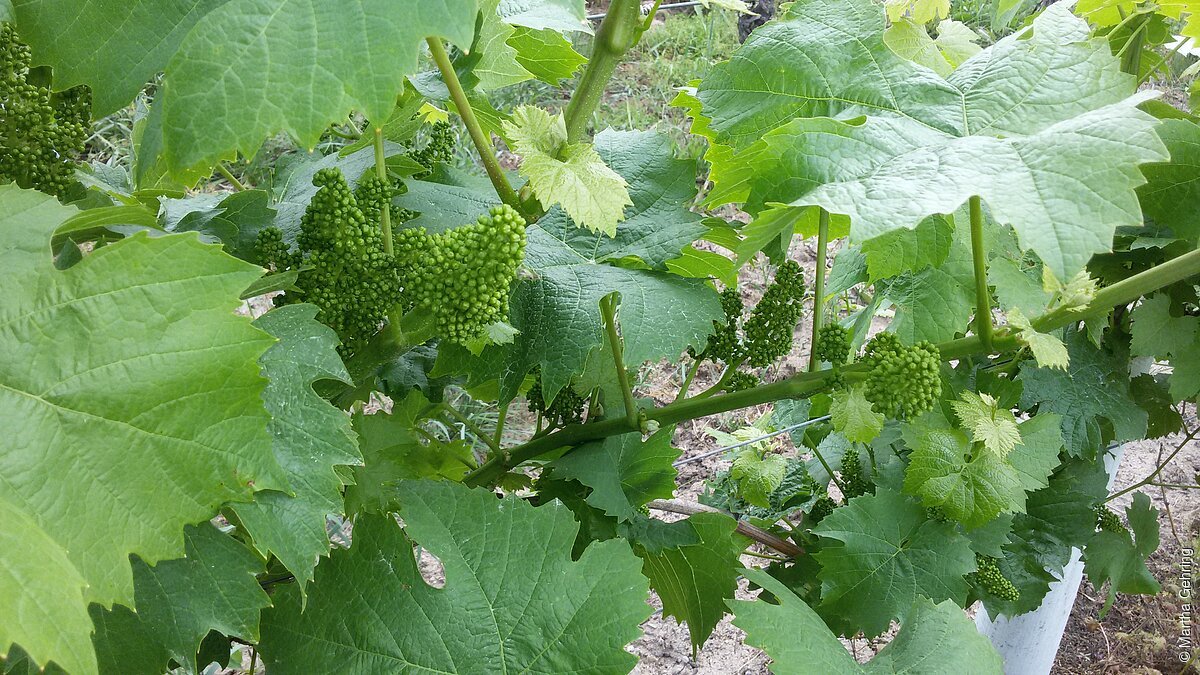
The Wine Buff or „Schoppenpfetzer“
This is a humourous name for a keen wine-drinker who is known to order a glass (in Franconia called “Schoppen”, usually containing a quarter of a litre of wine) more than strictly necessary. These wine buffs act like connoisseurs and smack their lips in appreciation.
Food and Wine
A wonderful wine and a delicious dish – each on its own can be like a culinary revelation. But the experience becomes many times more remarkable if you view the two as equal partners which you have to coordinate. Bad news – it takes a lot of serious study and experience to successfully pair wines and foods. Old adages like “red wine goes with dark red meat, white wine goes with veal and poultry” are now spurned in today’s creative cuisine. Good news - in restaurants certified by “Franconia – A Land of Wine and Beauty”, sommeliers or well-trained waiting staff are there to recommend matching wines. And in smaller eating places or wine bars the wines and the dishes or snacks on offer are always chosen to harmonise with each other.

Secco
Secco has nothing to do with the Italian word "secco" for dry. Rather, its name is derived from the Italian Prosecco and refers to sparkling wine. It is produced similarly to how a sparkling wine is produced, but with less pressure from carbonic acid. This makes it a light and lively alternative to sparkling wine. With relatively little amount of alcohol, it is ideal for summer, especially when served cool at about 6 to 8 degrees. Incidentally, the carbonic acid for the Secco comes from the fermentation of the grape must in the wine: it is captured and returned to the wine after fermentation.
Terroir
The term “terroir” summarises the most important factors responsible for the good quality of a wine: important in the vineyard is the right combination of soil, type of grape, microclimate and topography. But there is more to it than that, for it is only the personal involvement and passion, the expertise and the nurture of both winegrower and winemaker that result in really superb wines.
explore the places of "terroir f"
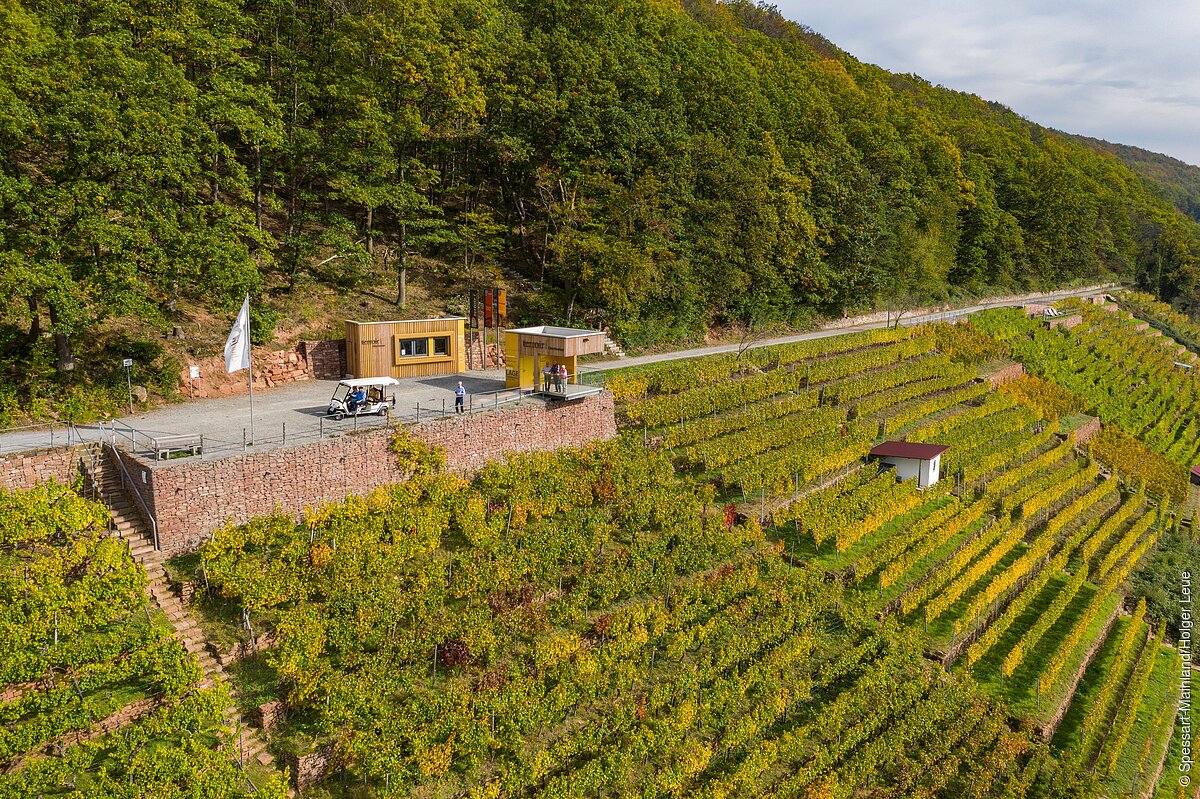
Vinotheque
This word is often used to describe a winery shop with high-quality products on sale or else a private wine cellar with a selection of very good wines.
to the Vinotheques in Franconia
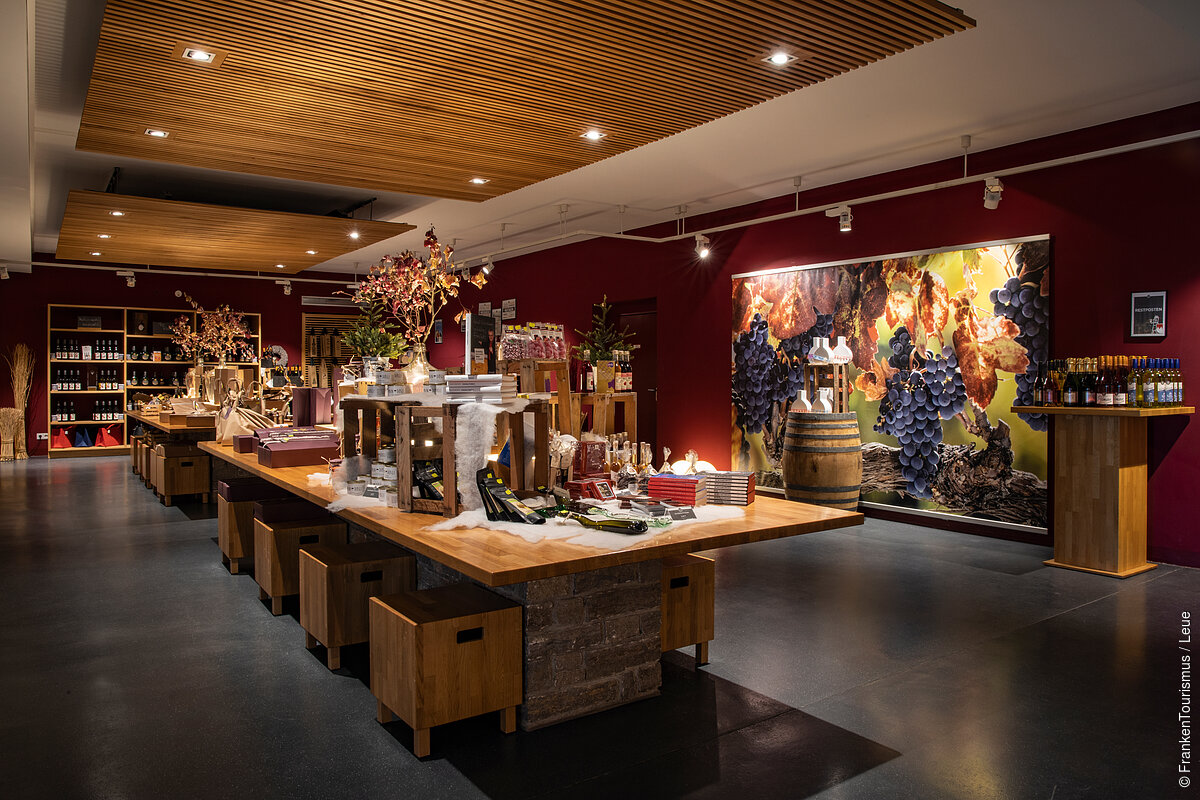
Wine and Health
When clinking glasses, Germans say „Prost“ or „Prosit”. The Latin word literally means “May it do you good!” This wish may well be justified, for studies have indicated that wine drinkers live healthily, and white wine is just as good for you as red wine, Secco or Rosé. Obviously this only applies if any wine is drunk in moderation and preferably together with a meal so that the alcohol can be absorbed more gradually.